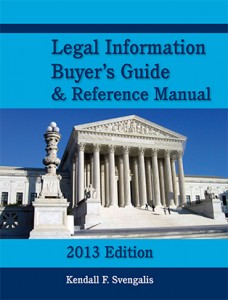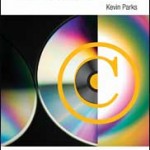 If it’s a small or solo practice, most likely it does not. If this is the case, you might at least want to consider purchasing the Legal Information Buyer’s Guide & Reference Manual (2013 ed.). New England LawPress publishes this book “…to address the needs of the solo practitioner and the attorney in the small or medium-sized law firm operating without a law librarian.” (p. 5)
If it’s a small or solo practice, most likely it does not. If this is the case, you might at least want to consider purchasing the Legal Information Buyer’s Guide & Reference Manual (2013 ed.). New England LawPress publishes this book “…to address the needs of the solo practitioner and the attorney in the small or medium-sized law firm operating without a law librarian.” (p. 5)
This 857 page resource contains extensive history of the legal publishing industry, with the publishers’ developments and mergers noted along the way. It also explains what the most bare-bones law office needs for its core collection of legal information, and how best to evaluate the extras. Guidance is provided on managing the time, money and mess of supplementation. It identifies the best authoritative sources in each of numerous legal specialties, as well as the appropriate published codes, court reports and research guides for each state. The book concludes with addresses, phone numbers and websites for publishers and representative prices for used law books.
“When are online services or subscriptions a better deal than the hardcopy versions?” you ask. A chapter on services and pricing of computer-assisted legal research is also provided, with the options going far beyond the market-dominant standbys of Lexis and Westlaw. (Sometimes a very good, and most affordable option is plain old free internet and Google.) Stop by the Law Library if you would like to take a look at this useful reference tool.
![9780195394870[1]](https://ramseylawlibrary.org/wp-content/uploads/2013/05/978019539487011.jpg)
![file0001067824907[1]](https://ramseylawlibrary.org/wp-content/uploads/2013/05/file000106782490715-300x200.jpg)
![dvsvbook200[1]](https://ramseylawlibrary.org/wp-content/uploads/2013/05/dvsvbook20016-150x150.jpg)
![file0001027529042[2]](https://ramseylawlibrary.org/wp-content/uploads/2013/04/file000102752904224-200x300.jpg)
![9781595588692_p0_v2_s260x420[1]](https://ramseylawlibrary.org/wp-content/uploads/2013/03/9781595588692_p0_v2_s260x4201-202x300.jpg)


